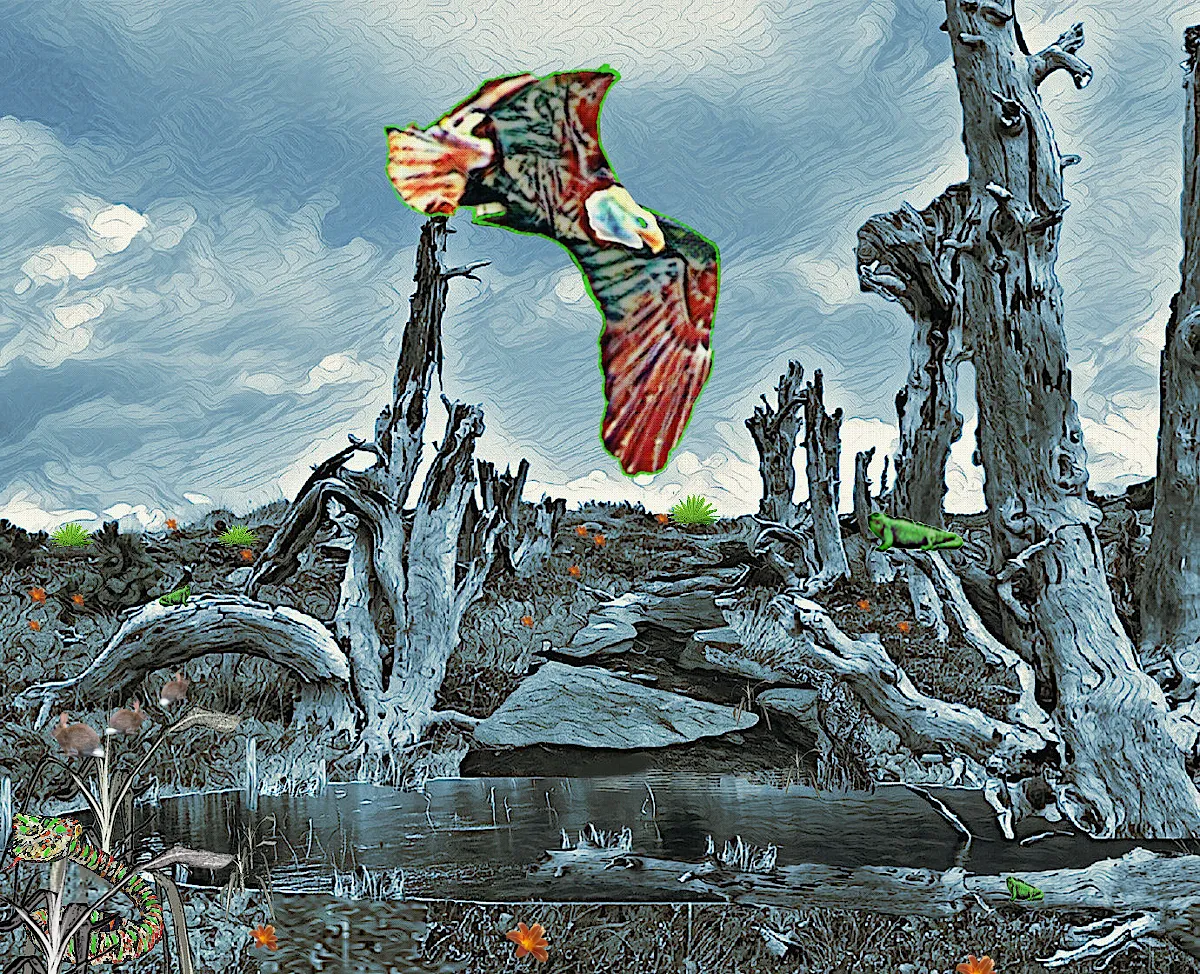
I was struck by the beauty of this week's template by @shaka. It didn't take me long to come up with my fire theme (explained further down in the blog)
Template for LMAC 212
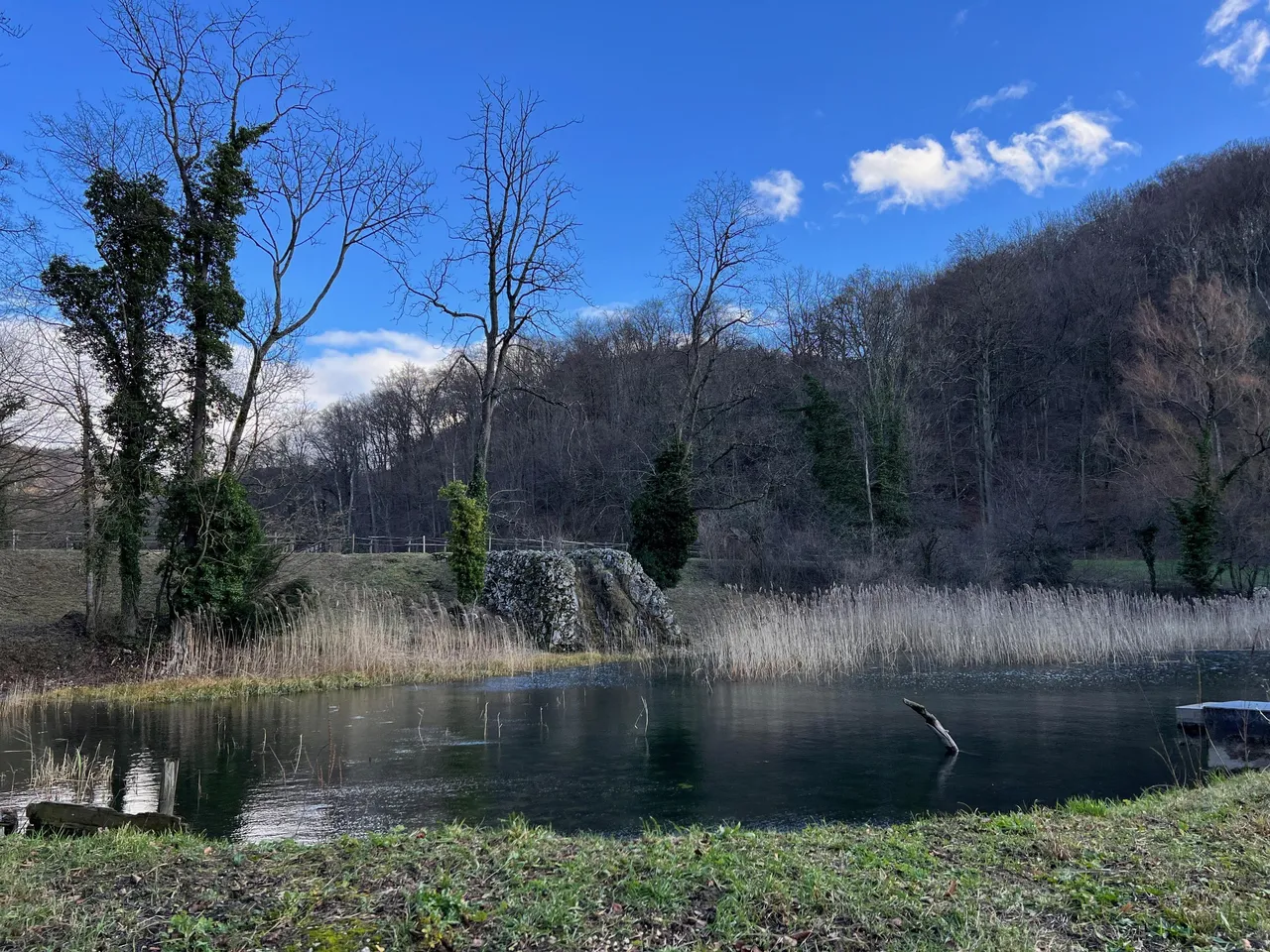
I have fire/smoke detectors on every ceiling in my house. There is a fire station about half a mile from my home and there is a fire hydrant on the next block. I can see the hydrant from my bedroom window.
We fear fire, and rightfully so. Fire is ruthless in its destructive fury. And yet, fire is essential to the health of our forests and savannas. There are actually animal and plant species that depend on fire.
One important function (according to the Ocean Blue Project) of a natural fire is that it tends to eliminate invasive species. It also eliminates the weaker members of the plant or animal community.
A fire that does not burn for too long (again according to the Ocean Blue Project) will likely not kill large mammals. These are likely to smell a fire long before it is an immediate danger to them. They will escape, probably. Also, burrowing animals, such as the cottontail rabbit often survive underneath the ground and reemerge after the fire.
Plant species, such as the Sandplain Gerardia Agalinas acuta, thrive after a forest fire. This species is endangered. It needs open space and absence of competing plants to thrive. Fire suppression (fighting forest fires) impedes the growth of this plant.
Sandplain Gerardia(Agalinas acuta)
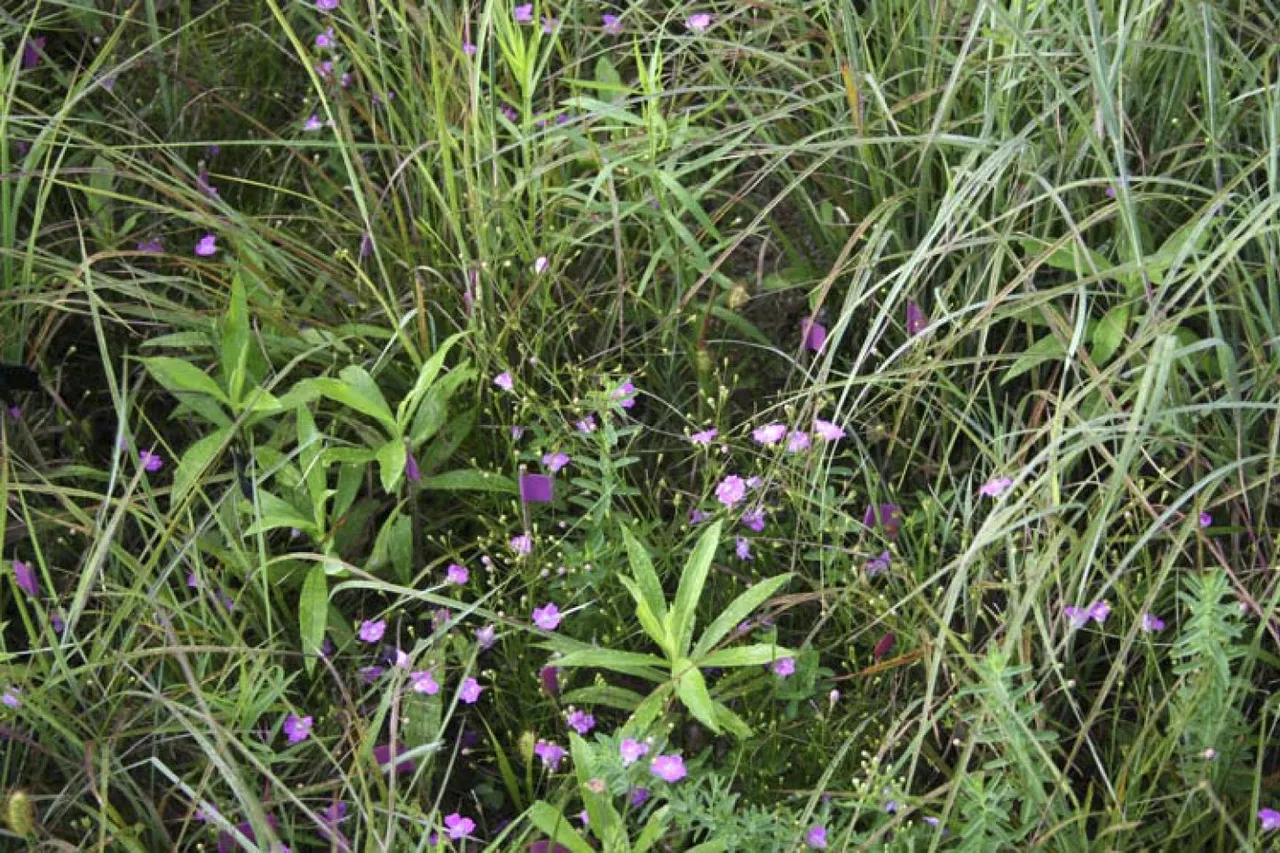
Image credit: Erin King, botanist, Fish and Wildlife Service, USA. Public
After a fire, ferns will also appear quickly. They thrive on the soil enriched by matter deposited after the fire has subsided.
As is true with forest fires, savannas and grasslands require fire as part of their ecological life cycle. As an article posted by the Wildnature Institute explains:
A fire is a feast for some animals, such as birds that come to sites of fires to eat grasshoppers, stick insects, beetles, mice, and lizards that are killed or driven out by the fire.
Plant life resurges in the ash that covers the ground in the fire's wake. The deep roots of the plants survive and in rainy season, which follows fire season, bunch grass grows back so quickly that it may grow as much as an inch in 24 hours. The abundant growth offers food to young antelope calves. And thus the cycle of life continues.
Adult Sable Antelope on African Savanna
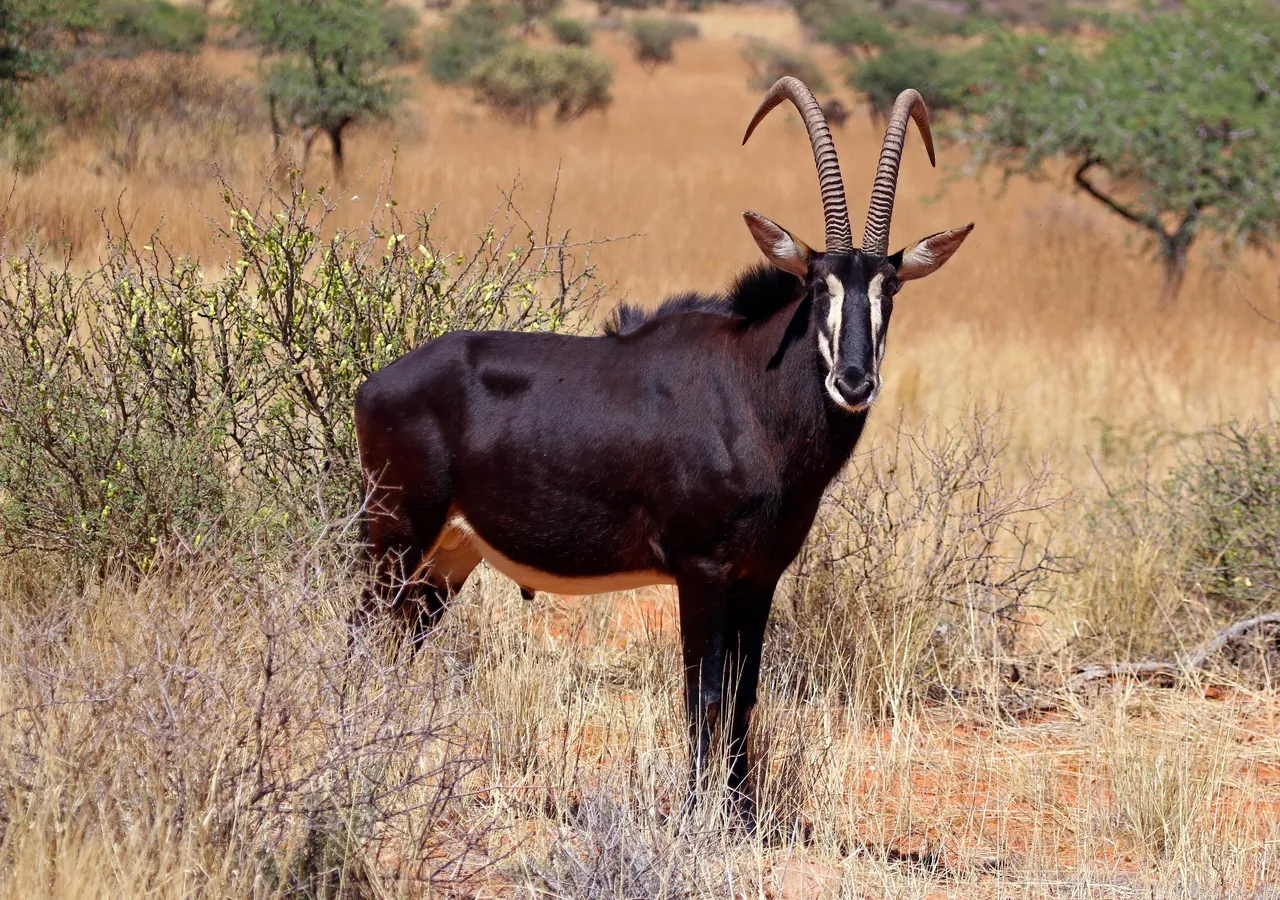
Image credit: Charles J. Sharp,Sharp Photography. Used under CC 4.0 attribution/share-alike license.
And then there is the fire lily Cyrtanthus ventricosus. This flower pops its glorious head up in as little as two weeks after a fire has subsided. These flowers are only triggered by fire.
If you look at the amazing art that was posted in response to the template this week, you will see that my collage is much more literal than most of the others. Those collagists are artists. I'm a hobbyist who is grateful that this community allows me to express my artistic self through collage.
From the beginning of my collage process this week I knew I would focus on the pond, and the cycle of life. This pond seemed to be in the process of reverting to swamp. It was easier for me to represent wake of a forest fire than the pond/swamp cycle in a picture.
I first found the scene of a forest after a fire on Pixabay:
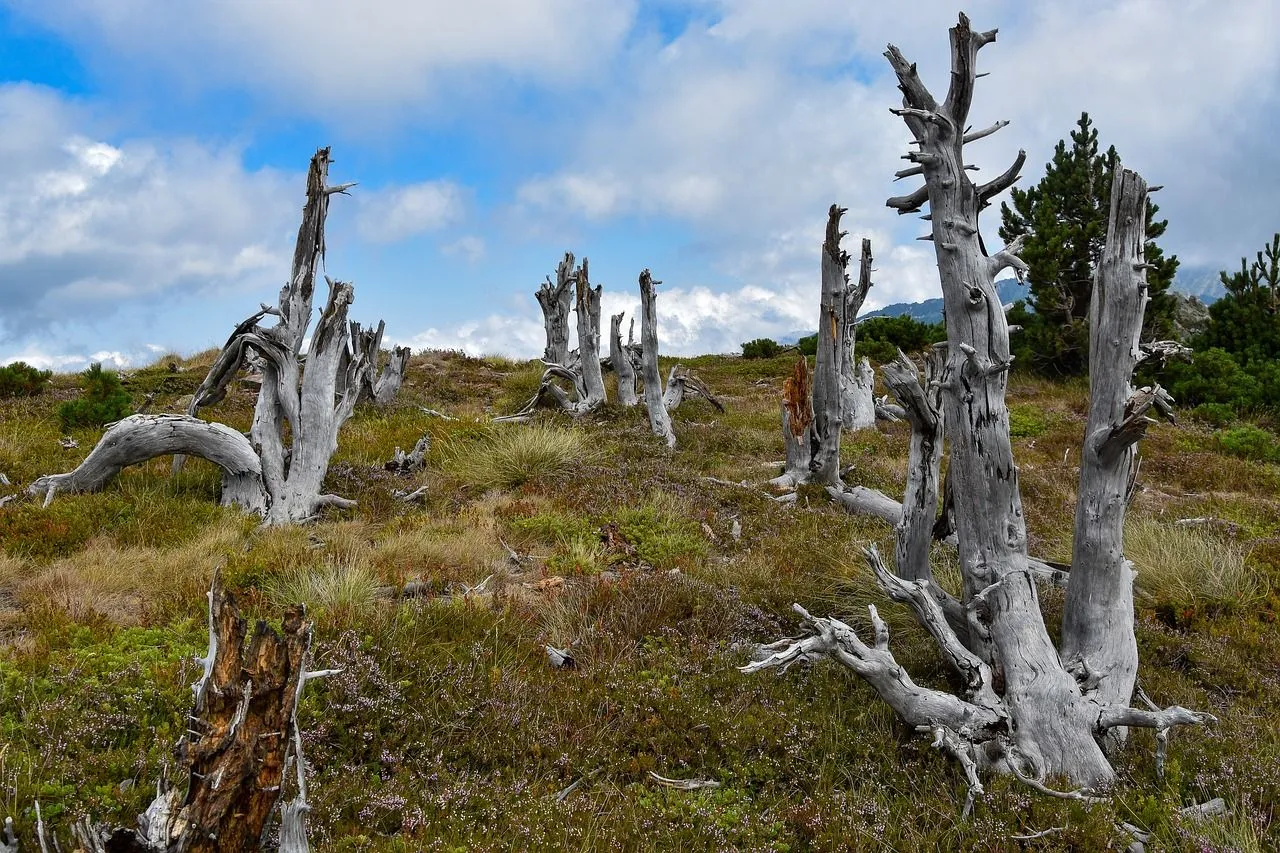
I modified that with elements from the template.
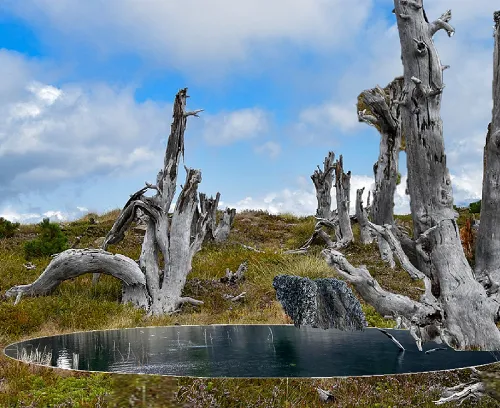
I added a rocky stream from LIL (my photo in the Gallery)
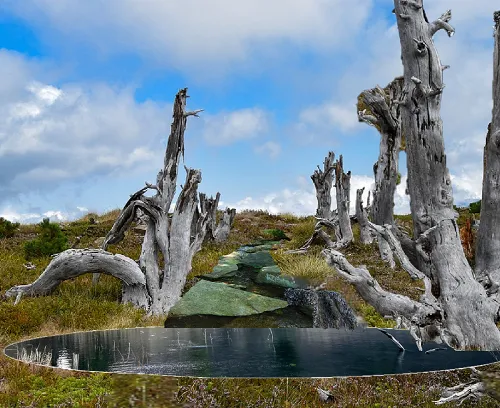
Desaturated the picture (to make color uniform), added blue tint, added mirror image of a tree to look like a sunken tree in the water, and ran the whole thing through a Lunapic filter.
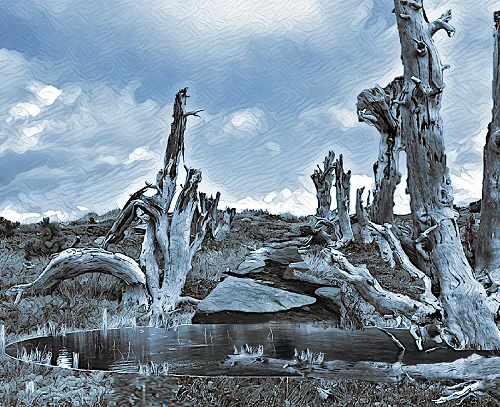
Played around with the water to make it look as though the stream was flowing into the pond. Started adding animals: lizards, snake, bird, rabbit. Then added the ferns. The idea was to simulate growth after a fire. I gradually added life as I discovered which living thing would appear after a fire. The predator, an eagle, was important to include, because this animal returns to the scene of the fire in order to feed on survivors.
I highlighted some of the colors to make them stand out in the picture. My final result I think is a little chaotic, but it is informative :)

These include 5 from the LMAC Gallery (one of them mine). Thank you friends and colleagues :) Also, I used 5 from Pixabay. Thank you to those contributors.
Fern
https://pixabay.com/es/illustrations/palma-hoja-tropical-planta-4206653/Fire Lily
https://pixabay.com/es/photos/feuerlilie-lirio-planta-naranja-3598496/
Forest Fire Scene
https://pixabay.com/es/photos/madera-muerta-fuego-monta%C3%B1a-nubes-7375089/Cottontail Rabbit
https://pixabay.com/es/photos/conejo-salvaje-brown-conejo-5103687/
Stream
@agmoore
https://www.lmac.gallery/lil-gallery-image/10852Snake
@quantumg
https://www.lmac.gallery/lil-gallery-image/15589Salamander
@muelli
https://www.lmac.gallery/lil-gallery-image/7343Plant
@yaziris
https://www.lmac.gallery/lil-gallery-image/7631Eagle
@redheadpei
https://www.lmac.gallery/lil-gallery-image/6855
LIL is not only a valuable image resource for the Hive community, but is also a way for community members to participate in LMAC. Anyone on Hive can contribute to the library and everyone can borrow from it. Learn about the procedure here.
Every week we offer prizes to fifteen finalists in the contest, but it's not only the prizes people create for. I, for example, don't compete but spend hours giving vent to my imagination. Others in the community have developed the habit of 'speaking' through collage.
This week's contest has concluded. But a new contest will begin tomorrow, with a brand new template. Please join in the fun.
As @shaka has said many times, everyone is an artist. I may not be an artist in the technical sense, but LMAC allows me to nurture my own unique artistic voice.
Thank you for reading. Peace and health to all.